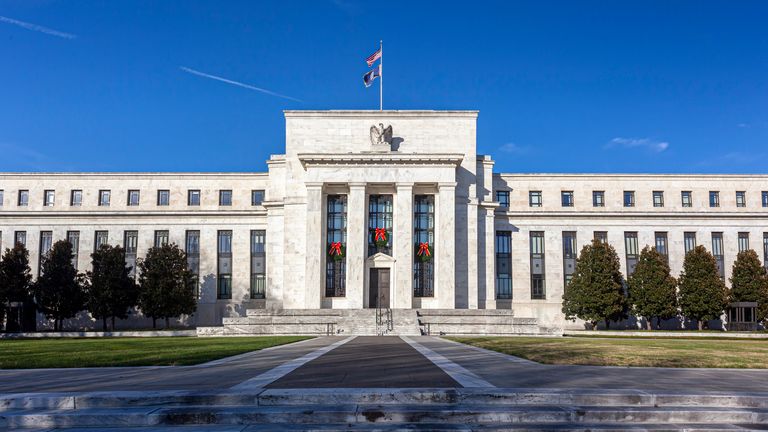
USA Federal Reserve: Guiding Economic Stability and Monetary Policy

Navigating Economic Waters: Understanding the Role of the USA Federal Reserve
In the intricate dance of economic policies and financial stability, the USA Federal Reserve emerges as a key player. This article unravels the complexities surrounding the Federal Reserve, shedding light on its functions, impact on monetary policy, and the pivotal role it plays in steering the nation’s economic course.
The Federal Reserve: An Overview
The USA Federal Reserve, often simply referred to as the Fed, is the central banking system of the United States. Established in 1913, its mandate encompasses fostering economic stability, maximizing employment, and maintaining moderate long-term interest rates. Understanding the foundational principles of the Federal Reserve is essential for grasping its influence on the country’s economic landscape.
Monetary Policy and Interest Rates
One of the primary tools in the Federal Reserve’s toolkit is monetary policy, particularly the management of interest rates. By adjusting the federal funds rate, the rate at which banks lend to each other overnight, the Fed influences borrowing costs throughout the economy. Controlling interest rates is a key mechanism for regulating economic activity, inflation, and employment levels.
Inflation Targeting and Economic Indicators
The Federal Reserve operates with a dual mandate of promoting maximum employment and stable prices. Inflation targeting is a crucial aspect of its strategy. Monitoring economic indicators such as the Consumer Price Index (CPI) and the Producer Price Index (PPI), the Fed aims to keep inflation at a moderate level. Striking the right balance between economic growth and price stability is a delicate task.
Crisis Management and Financial Stability
Throughout history, the Federal Reserve has played a pivotal role in managing economic crises. Whether during the Great Depression, the 2008 financial crisis, or the recent global pandemic, the Fed has implemented measures to stabilize financial markets and prevent systemic collapse. Its ability to act as a lender of last resort provides a crucial safety net during tumultuous economic times.
Quantitative Easing and Unconventional Policies
In response to extraordinary economic challenges, the Federal Reserve may resort to unconventional policies such as quantitative easing. This involves purchasing financial assets to inject liquidity into the financial system. Understanding these unconventional measures is vital as they shape the landscape of monetary policy and influence market dynamics.
Banking Regulation and Supervision
Beyond monetary policy, the Federal Reserve is tasked with regulating and supervising the banking system. This involves ensuring the stability and integrity of the financial institutions that make up the backbone of the economy. The Fed’s oversight extends to conducting stress tests to evaluate banks’ resilience under adverse economic conditions.
Communication and Forward Guidance
Clear communication is a hallmark of the Federal Reserve’s approach. Regular statements, press conferences, and congressional testimonies by the Fed Chair provide insights into its decision-making process and policy outlook. Markets closely analyze these communications for clues about future monetary policy directions.
Global Implications and Coordination
The actions of the Federal Reserve reverberate beyond U.S. borders. In an interconnected global economy, decisions regarding interest rates and monetary policy impact international financial markets. The Fed often collaborates with other central banks to address global economic challenges and ensure coordinated responses to shared concerns.
Educational Resources and Career Paths
For individuals interested in economics, finance, and policymaking, the Federal Reserve offers a wealth of educational resources. Understanding the functions and operations of the Fed opens avenues for careers in central banking, monetary policy analysis, and financial regulation. Platforms like CareerTH.com provide insights and job opportunities for those aspiring to contribute to the world of central banking.
Exploring Opportunities in Economic Stewardship
To explore opportunities in the realm of economic stewardship and central banking, visit CareerTH.com. This platform serves as a gateway for individuals seeking careers aligned with the principles and functions of the USA Federal Reserve. Navigating the economic waters requires informed decision-making, and CareerTH.com can be a compass for those charting a course in this dynamic field.
Conclusion: Charting Economic Courses
In conclusion, the USA Federal Reserve stands as a linchpin in the nation’s economic machinery. Its functions, from monetary policy to crisis management, shape the economic landscape. As individuals and businesses navigate the complexities of economic waters, understanding the role of the Federal Reserve becomes paramount. By staying informed and exploring opportunities on platforms like CareerTH.com, individuals can actively contribute to and thrive in the dynamic world of economic stewardship.
